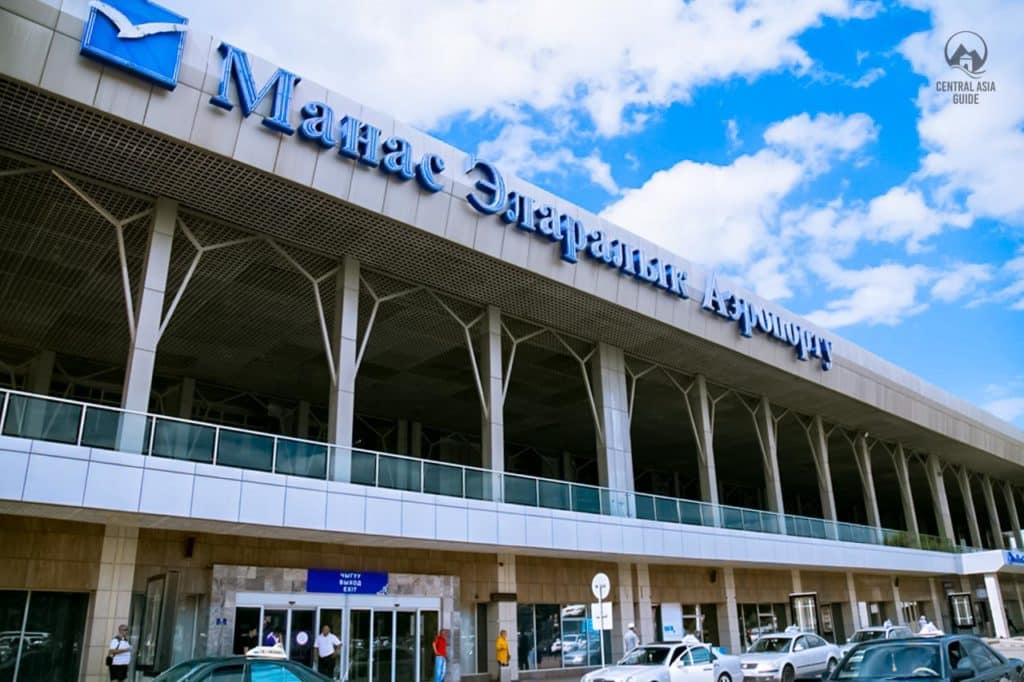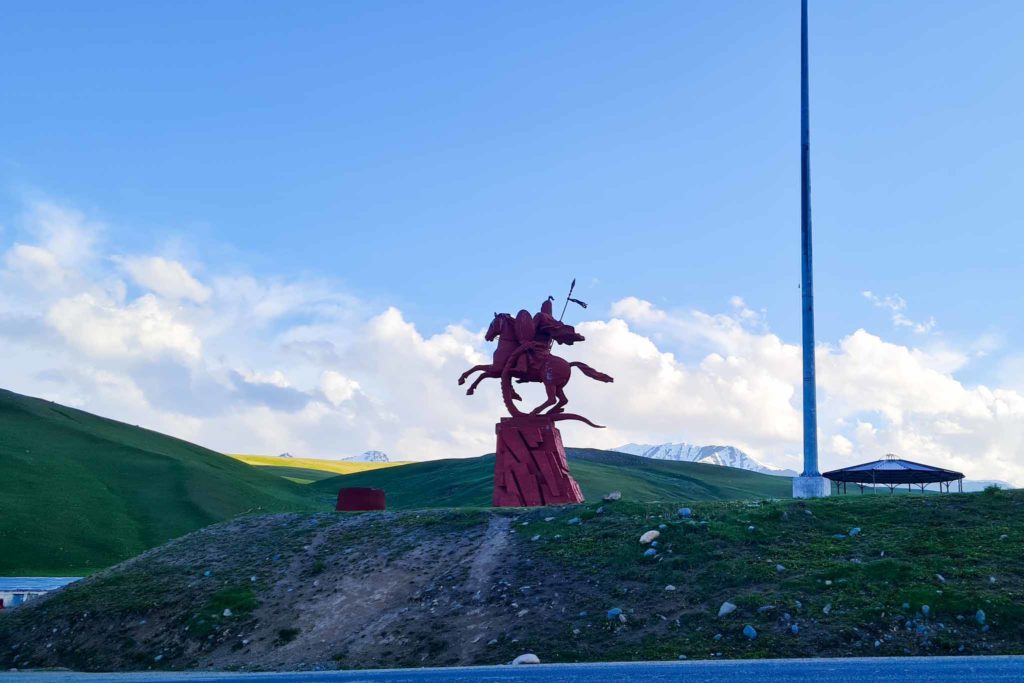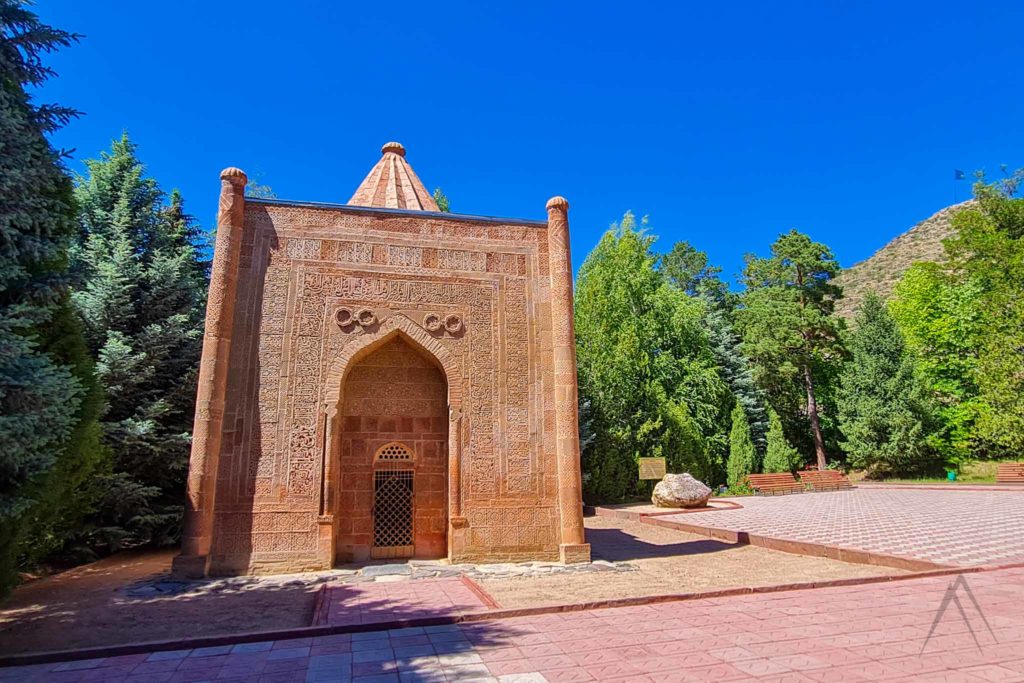Manas epic
Manas, the Kyrgyz Epic
The Manas epic or legend is Kyrgyzstan‘s most significant cultural treasure and one of the world’s largest collections of spoken poems. The oral epic of Manas has even been included on the UNESCO Cultural Heritage list. According to the epic, Manas is a 10th-century legendary hero of the Kyrgyz people, who value him as their sacred ancient forefather.
The Manas legend goes to the heart of their spiritual identity and is a symbol of their nationalism and culture. Manas epic has actually the most verses of any known epic but is not the longest one as the verses are short. Manas epic is a long, complex cycle of legends associated with the achievements of a heroic Batyr (khan or tribal leader). He is believed to have all the powerful qualities that are ideally associated with the Kyrgyz character. Manas is one of the many oral Turkic language group stories referred to as dastans. The most known similar type epic in Uzbekistan is called Alpamysh or Alpamis.

With half a million lines of poetry, it is 20 times longer than the more known Homer’s Odyssey and The Iliad combined. Being an oral tradition, it is a wonder that the legend has survived for centuries without being written down and “Manaschi” (Oral speaker of the Manas related tales) have always been admired for their improvisation skills while presenting the tales of Manas. You can see Manaschi in action during some of our Kyrgyzstan Tours and Central Asia Tours.
The full version of the Manas is comprised of seven volumes (Eight in Chinese version), with the first being about Manas himself and the other six being about his descendants.
The first three volumes: The stories of Manas, his son Semetey and his grandson Seytek are regarded as the Great Kyrgyz Epic Trilogy. The epic topic describes how several generations of King “Manas” descendants unified all the Kyrgyz tribes together to defend against invasions from other groups.
A brief summary of the Manas epic
The legend begins with Manas, a leader of enormous bravery and power who unites the Kyrgyz people against foreign enemies, leading in an era of justice, brotherhood and unity. After he is mortally wounded in battle, the second part follows the adventures of his wife, the wise Kanykei and son Semetei, while the third part tells of his brave grandson Seitek.
Manas is said to have had tens of thousands of horsemen at his control. A personal guardian of 40 warriors who served the best various Kyrgyz’s tribes and who would later become his personal friend and close companions. According to the tale, Manas was finally assassinated by Kongurbai, a Chinese leader.
Following his death, the Kyrgyz tribes were led by his younger brothers Abyke and Bobosh. These brothers wanted to marry Manas’s widow Kanykey but she escaped with her son Semetei to Bukhara where her father ruled as a khan. When Semetey grew up he returned to the land of his birth (Talas) to revenge his father’s death. Semetei succeeded in defeating his uncles in battle but his father’s 40 companions who had survived would not serve him and so he had them beheaded.


The epic content also contains real events of the peaceful life of the Kyrgyz but with special artistic reflection. The image of peaceful life contains a description of almost all folk customs and traditions, ranging from housing, cooking, clothing, military equipment, livestock care, family and public holidays, and ending with funeral lamentations and customs.
As it can be seen already from here, the tale has many versions and most likely it has slowly changed throughout the centuries that it has been told by the different speakers in different times. There are also claims that this epic told before about the Nogai people and was only adopted later by the Kyrgyz people for the purposes of nation building. Nevertheless, Manas storytelling lives on in Kyrgyzstan and the name can be often seen in the daily life of Kyrgyzstan and the statues of the hero can be found all around the country.


Manaschi
A manaschi is a person who entertains by reciting the poems from the Epic of Manas. The story of the legendary manaschis tells that one is born into their profession rather than made, taken in dreams by a visit from Manas spirit. The Manaschi have passed the stories down from generation to generation and have been revered for their knowledge, but also for their dramatic delivery. They were traditionally illiterate akyn (bards) and wove issues of the day into the stories and improvised from a basic storyline and rhythm in the same way a talented jazz musician does.
The best manaschi improvise verses, which have a distinct rhythmic beat and are characterized by expressive hand gestures. The most nationally famous manaschi are Toktogul Satylganov, Togolok Moldo, the rare female manaschi Seyde Moldoke kyzy and Sayakbai Karalaev.
Unfortunately, there are only a few good Manaschi left. Manashi generally sang the verses without musical accompaniment were assumed to have shaman-like powers and were often consulted by ordinary people on personal matters. Lately, the manaschi tradition has seen a renaissance as the Kyrgyz people have awoken to preserve their culture. One can see manaschi in the theaters of the largest Kyrgyz cities especially in Bishkek or during our many tours.
The Manas epic begins:
“His mother was nine days in labor,
Eight midwives were on hand,
A sound of screaming rang out, and everyone rushed
to see, Was it a boy or girl?
When his mother saw Manas’ penis, she so glad she swooned.
Recovering consciousness, she lifted Manas,
But he was as heavy as a 30-year-old man.
Greedily, he ate three sheep’ stomachs fill with butter…. “
More about Manas
More About Kyrgyz Culture
Page updated 29.11.2022